The city of Venice in Northern Italy is famous for its unique location and canals. Several bridges are spanning the numerous canals and have become tourist attractions in themselves.
In this post, you’ll discover the ultimate list of facts about the Rialto Bridge, one of the most famous bridges in Venice.
Related: Here are 50+ more cool bridges.
1. It spans the main canal in Venice
Venice is one of the most unique cities in the world full of wonderful buildings. It’s built on a total of 118 islands in the Venetian Lagoon. All these islands are interconnected with over 400 bridges.
The main canal, which serves as the major water-traffic corridor of the city, is called the “Grand Canal,” (“Canale Grande” in Italian) and the Rialto Bridge, which is a stone arch bridge, spans this important channel.
Some more details about the Rialto Bridge:
- The bridge is 22.90 meters (75.1 ft) wide.
- The bridge is 7.32 meters (24.0 ft) (arch only) high.
- Its longest span is 31.80 meters (104.3 ft).
- It was constructed between 1588 and 1591.

2. The 4 bridges that span the Grand Canal in Venice
Out of the 400+ bridges that interconnect the 118 small islands that form the city of Venice, only 4 actually span the Grand Canal of the city.

Below is an overview of the 4 bridges that span the Grand Canal in Venice:
Ponte dell’Accademia
The Ponte dell’Accademia spans the Grand Canal near the southern end of the canal and is named after the Accademia di Belle Arti di Venezia, a public art academy in the area.

The original bridge was a steel design and opened on November 20, 1854, until it was demolished and replaced by a wooden bridge in 1933.
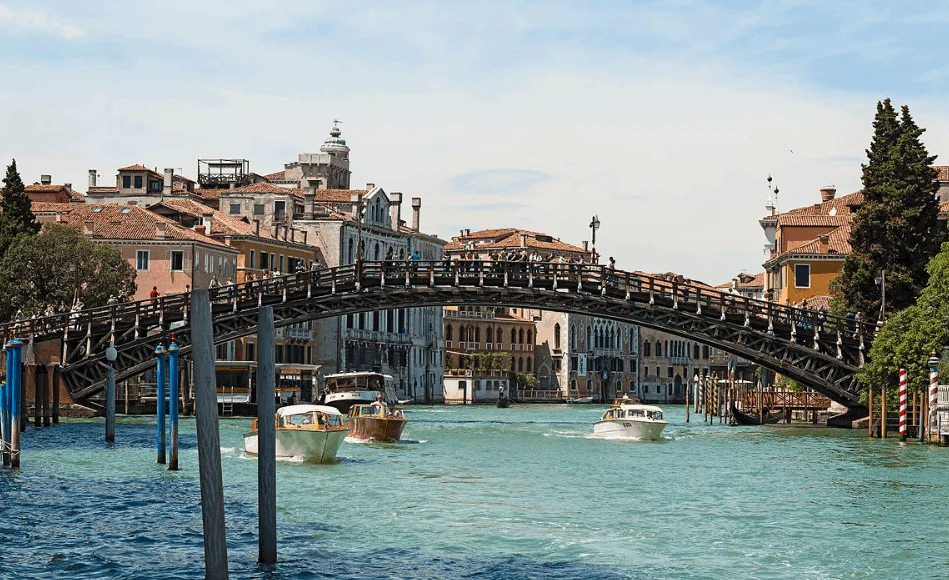
Ponte della Costituzione
The Ponte della Costituzione or the “Constitution Bridge” is the youngest of the four bridges spanning the Grand Canal in Venice.
It was only opened on the night of September 11, 2008, to celebrate the 60th anniversary of the Italian constitution and was previously known as the “Quarto Ponte Sul Canal Grande” or “4th bridge over the Grand Canal” and “Ponte di Calatrava.”

Ponte Degli Scalzi
The Ponte Degli Scalzi literally translates to the “Bridge of the Barefoot” and is located in the northern part of the city.
It’s not too far from the “Ponte della Costituzione” and the stone arch bridge replaced an Austrian iron bridge in the year 1934.
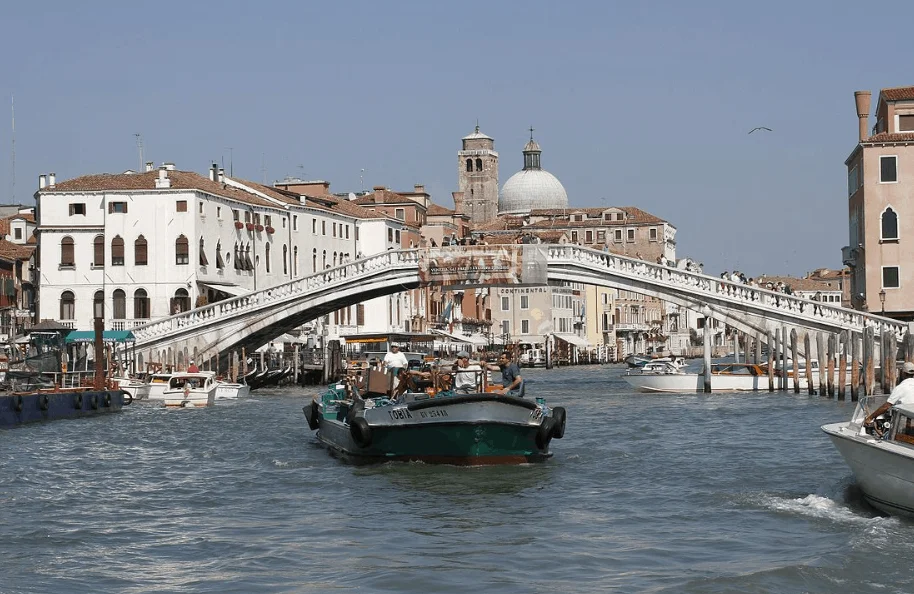
Ponte di Rialto
The most famous of all the 4 bridges that span the Grand Canal in Venice and the one we discuss in this post with the ultimate list of facts about the Rialto Bridge.
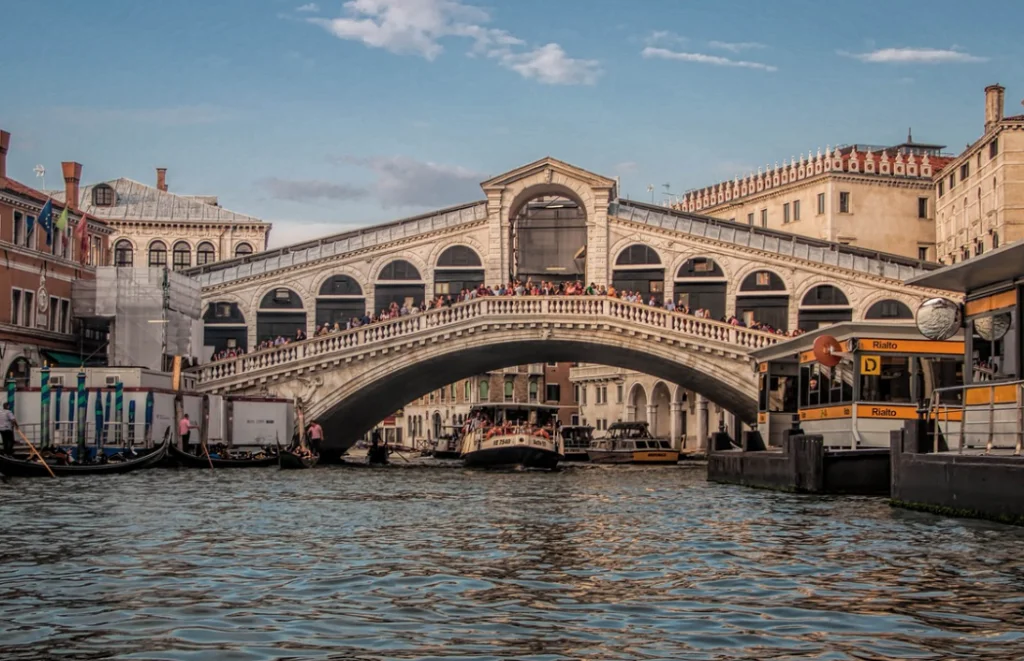
3. It’s the oldest bridge that spans the Grand Canal
Just like the London Bridge in London, the Rialto Bridge is the oldest out of the 4 bridges that span the Grand Canal in Venice.
It dates back to the 12th century as a “pontoon bridge,” which was a type of floating bridge that allowed passage over the canal, was first constructed on this location in the year 1173.

4. Rialto Bridge used to have a different name
When it was first constructed in the 12th century, it wasn’t called the “Rialto Bridge” but instead was called the “Ponte Della Moneta.”
The reason for this was that the “Zecca Mint” used to be located in its proximity, this probably since “antiquity” or the first time a local coin was minted in Venice.
The Zecca Mint across the Rialto Bridge was closed in the early 12th century though and moved in the year 1277 to the Sestiere of San Marco.
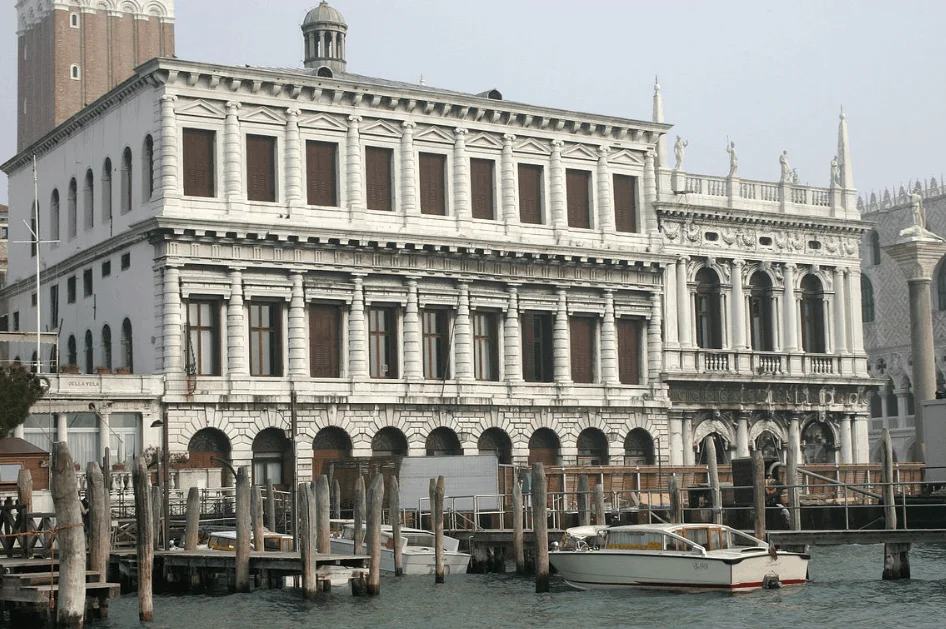
5. The floating bridge couldn’t handle the traffic
The Rialto Market become one of the most popular markets in Venice in the 13th century. The floating bridge that connected the market to other neighborhoods of the city was seeing a huge influx of traffic.
It wasn’t until the year 1255 that the outdated floating bridge was replaced by a wooden bridge that was much wider.
6. The wooden bridge allowed for ships to pass
The wooden Rialto Bridge was a medieval version of the Tower Bridge in London, allowing ships to pass in the Grand Canal.
It had 2 inclined ramps which were connected to a central area that could be raised in order for tall ships to pass.
This further increased the popularity of the area as bigger ships could reach the Rialto Market.
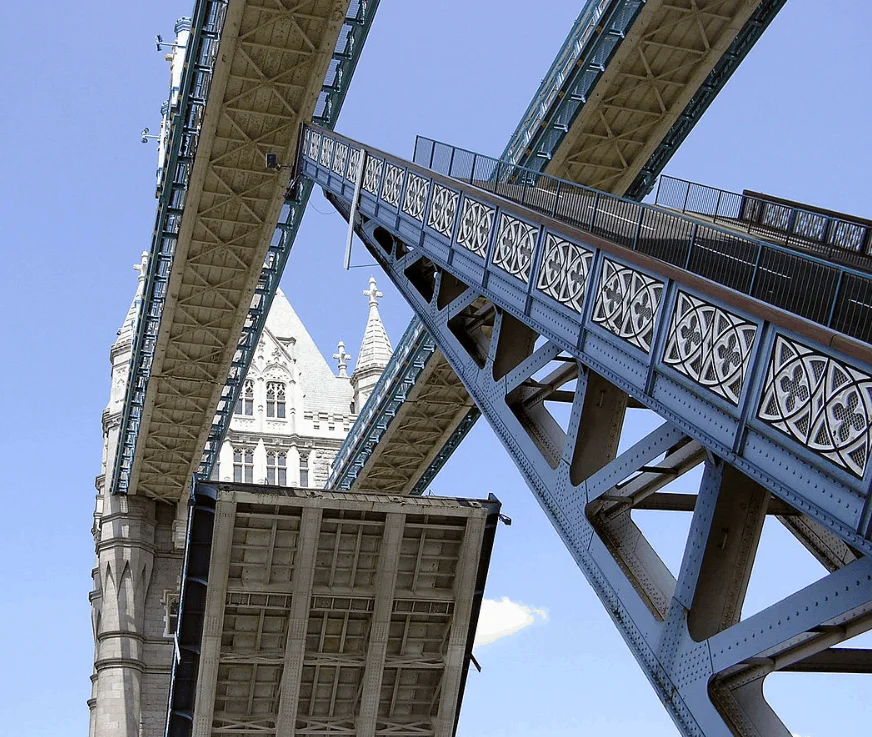
7. The name was changed to its current name
It was only logical that after the Zecca Mint was moved from its location next to the bridge, that it wasn’t referred to as the “Ponte della Moneta” anymore.
So instead, the bridge was renamed and called “Ponte de Rialto” after the neighborhood it’s located in and the connection that is provided for the Rialto Market.
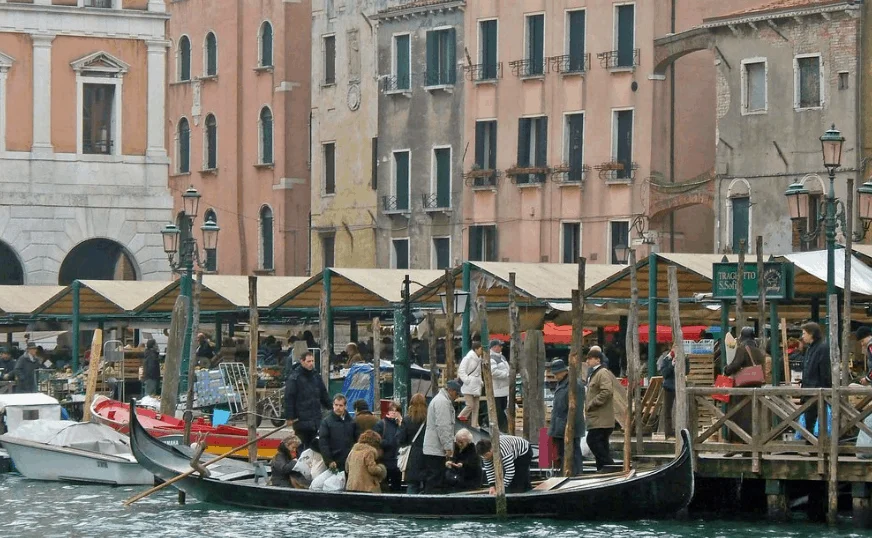
8. Shops were being built on the bridge
The bridge was immensely important for Venice and especially for the local market. Clever merchants saw the huge traffic that crossed the bridge as an opportunity to make some more money and started installing rows of shops in the first half of the 15th century on the bridge.
In order to benefit from this unique location, the merchants had to pay rent to the State Treasury.
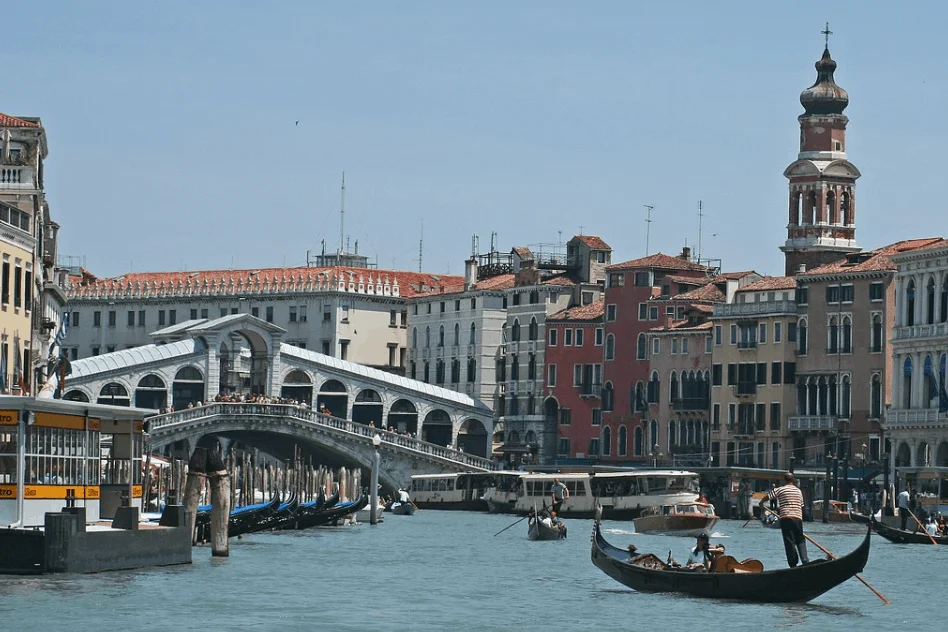
9. The income for the State Treasury was very needed
The wooden bridge made of timber, which is to be expected, wasn’t spared from the occasional catastrophe. Apart from collapsing on multiple occasions, it was once burned completely as well in a revolt that happened in 1310.
For this reason alone, having shops on the bridge which paid rent was a good thing, as it allowed for the maintenance of the Rialto Bridge.
10. A stone bridge was very much needed as well
A stone bridge had been requested by the authorities as early as 1503. After all, why would they continuously fix a wooden bridge if they could use the money to build a permanent structure in stone, right?
Not much happened though as this was nearly a century before construction actually started in 1588.
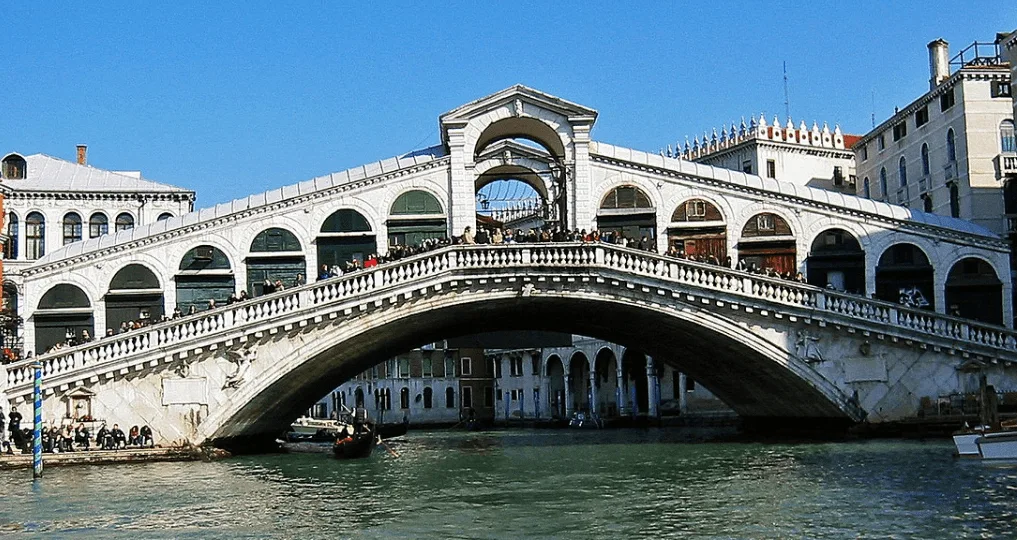
11. All famous architects’ proposals were rejected
It’s not that there was a shortage of architects and engineers who were capable of constructing a stone bridge. After all, this was the High Renaissance, a period that saw the likes of polymaths such as Michelangelo and Leonardo da Vinci hanging out in Venice.
Apart from Michelangelo, who did in fact submit a proposal, plans submitted by famous architects such as Jacopo Sansovino (famous for his work on the San Marco Square), Palladio (known for his Palladian villas) and Vignola (known for Church of the Gesù in Rome) were all being rejected.
The reason?
All of the submitted proposals were done in classical style with several arches, which weren’t deemed appropriate for the Rialto Bridge.
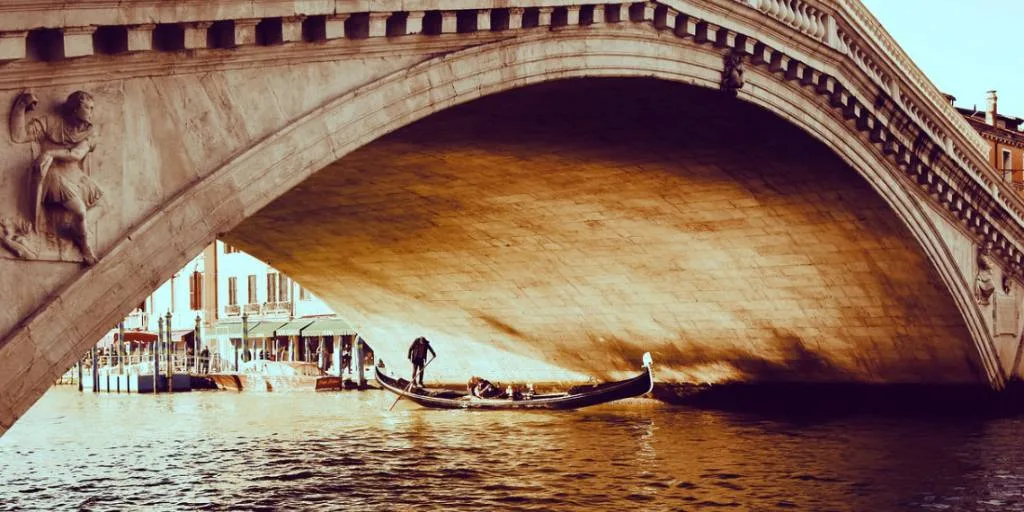
12. An architect (with a suitable name) was finally appointed
It wasn’t until the late 1580s that a proposal was submitted which was accepted by the local government.
That proposal was of Antonio da Ponte (1512–1597), a Venetian architect, and engineer who had previously been working on the rebuilding of the Ducal Palace in Venice after it burned down in 1574 (or “Doge’s Palace“).
Apart from this project he wasn’t very notable at all and beat a lot of famous architects to be awarded the construction of the Rialto Bridge.
Oh yeah, and he had a pretty suiting name for the Rialto Bridge project.

13. The design of the bridge was questioned
Da Ponte faced some opposition with his design of the Rialto Bridge. According to colleague architect Vicenzo Scamotti, the bridge would end up in ruins.
Why? because he felt that the design of the bridge put too much pressure on its foundations and he predicted it would end up like the Leaning Tower of Pisa eventually.
Nothing like that happened as the Rialto Bridge is still standing, as it stood hundreds of years ago, today.
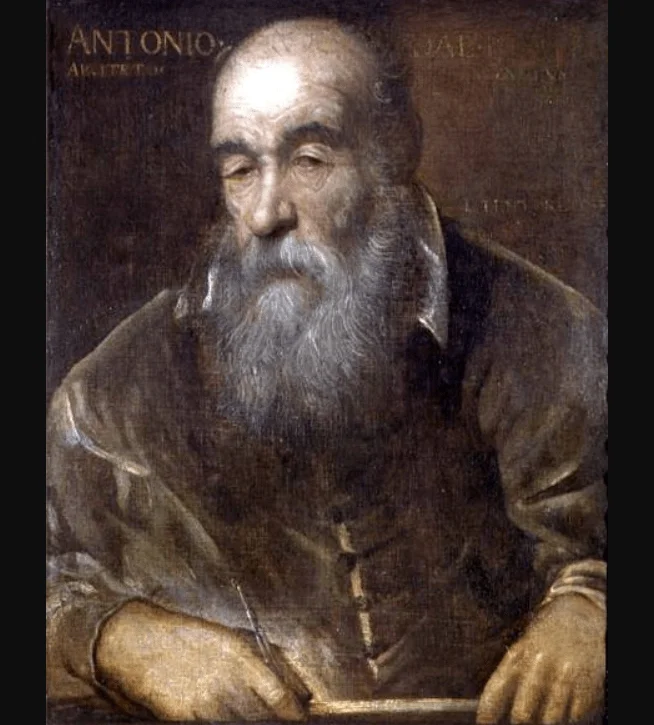
14. The design was very similar to that of the wooden bridge
Perhaps the reason that the proposal by Antonio da Ponte was accepted is that it was strikingly similar to how the wooden bridge looked.
There are 2 inclining ramps that lead up to a central area with a portico. On both sides of the bridge, there were 2 rows with shops that were rented out to make the State Treasury earn as well.

15. The wooden Rialto Bridge is in a painting
The painting that the wooden bridge appears in is called the “Miracle of the Holy Cross at Rialto” and was painted in the late 15th century (1496) by “Vittore Carpaccio.”
The painting depicts the curing of a madman by the Holy Cross in the Rialto neighborhood, and the wooden version of the Rialto Bridge, which was eventually destroyed and replaced by today’s stone version less than a century later, can be seen in the background.
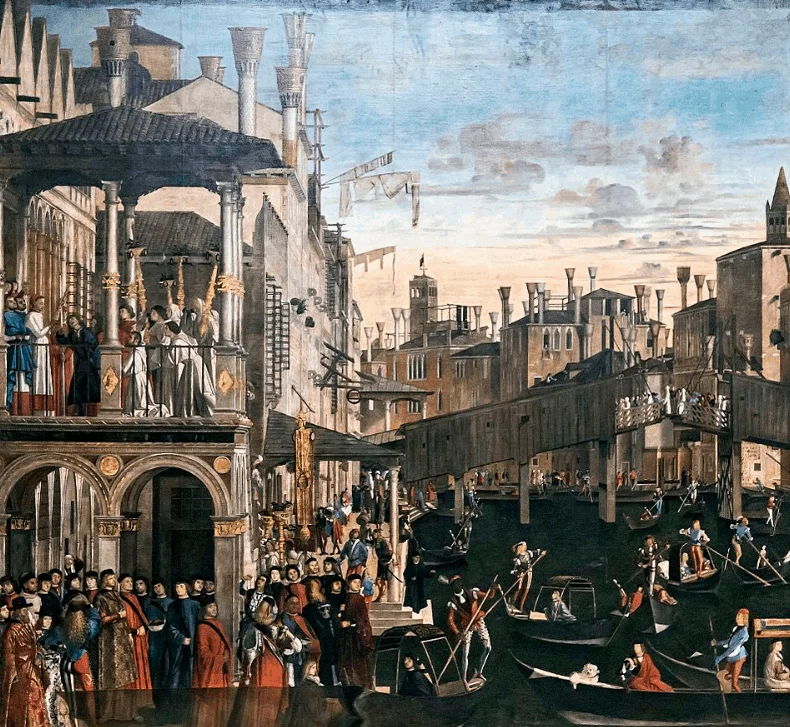

Leave a comment
You must be logged in to post a comment.